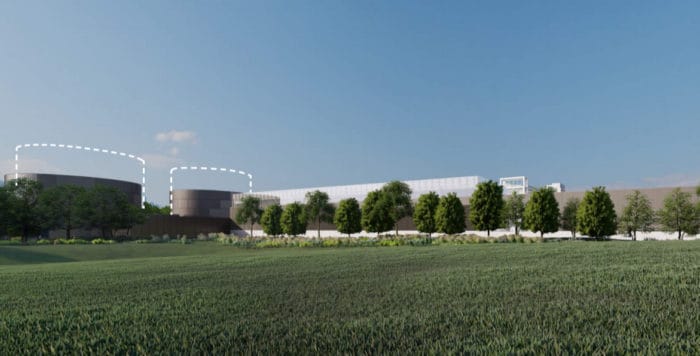Resident sues over approvals for Princeton University’s geothermal facility near nursery school and residential neighborhood

A Princeton resident has filed a lawsuit challenging the local planning board’s approval of Princeton University’s plan to build a geothermal facility next to a nursery school and close to a residential neighborhood.
Helen Nissenbaum, the spouse of a university professor, is the plaintiff in the lawsuit. She is being represented by local lawyer Bruce Afran, who also represented Nissenbaum and her husband, mathematician Peter Sarnak, during the planning board’s hearings on the geothermal facility earlier this year.
The lawsuit filed in the Mercer County Superior Court alleges that the planning board’s approval of the geothermal project was arbitrary, capricious, and unreasonable. The suit also argues that the planning board erred in approving the site plan as a permitted “accessory use” in an educational zone, and that the planning board failed to find that the buildings proposed for the site were harmonious with the area.
Deputy University Spokesman Michael Hotchkiss said in a written statement that university officials are confident that the planning board reached the correct legal conclusion when it approved the university’s application to for the project known as the TIGER geo-exchange facility. “That facility will further our community’s commitment to sustainability by expanding the university’s ability to meet campus energy needs without using fossil fuels,” Hotchkiss said. “We anticipate that the court will uphold the planning board’s decision.”
On May 11, the planning board approved the university’s plans to build the 24,410-square-foot TIGER geothermal exchange facility on about five acres of land in an E-1 education district. The facility will be 35-feet tall and will house equipment and electrical rooms at ground level, and have mechanical equipment and storage space at the mezzanine level. The site is bordered to the north
by the U NOW nursery school, to the west by FitzRandolph Road and the proposed East Campus
parking garage, to the east by the existing East Basin stormwater detention basin and
Broadmead Street, and to the south by Faculty Road. The closest house in the neighborhood nearby is located about 300 feet from the facility.
The facility will expand Princeton University’s capacity to deliver thermal energy to the campus without the use of fossil fuels, using the earth to cool water during the warmer months for circulation to university buildings and to warm water during the colder months to heat the buildings. Two 2.25-million-gallon thermal energy storage tanks will store water to be utilized to heat and cool the campus in conjunction with the existing West Plant. The 40-foot-tall tanks will be constructed south of the building about 65 feet north of Faculty Road. The facility and tanks were originally planned for another part of the campus that was not close to a residential neighborhood or the nursery.
According to the lawsuit, an E-1 district allows for educational activities, provided there is no nuisance factor other than incidental light and the noise due to the congregation of people, passenger traffic, and the delivery of goods. Dorms for students, housing for faculty and staff, and single-family homes are allowed in the educational district. The zone allows for accessory uses that are customarily incidental to permitted uses. The lawsuit argues that the university did not present sufficient evidence to support a finding that the geothermal plant is a customarily incidental use to the operation of the university. University representatives argued at the hearing that the geothermal plant was a permitted accessory use because the plant would provide heat and cooled air to the university buildings and that a “co-gen” and a “chiller” plant had been built decades earlier on the campus in the E-1 zone.
The TIGER facility will be linked directly to more than 600 boreholes that will be 800-feet deep,
to be excavated on lands covering a substantial part of the E-1 zone, according to the lawsuit. The lawsuit argues that a project of such a scale is not regularly associated with a university or single-family homes. The suit also argues that the university facility is a utility and that utilities are designated as permitted uses only in certain zones in Princeton. University officials have argued that the geothermal facility is not a utility. Afran previously argued that the planning board didn’t have jurisdiction over the application because a variance would be needed for the project in the E-1 zone, but his argument was rejected by local officials.
Noise was a key issue during the planning board hearings. The lawsuit argues that the TIGER facility will generate industrial noise on a regular basis that is not permitted in an E-1 zone. Numerous residents who live near the site of the geothermal facility and residents who have children who attend the nursery school, many of them university faculty members, expressed concerns at the hearings about noise and also complained about ongoing noise issues related to other university construction projects. Opponents of the project’s location argued that the university understated the extent of the noise that would be generated by TIGER, and overstated ambient noise levels in the neighborhood. They also said the TIGER facility should not be located next to a nursery school, and that the noise could harm the cognitive development of the children, in addition to the quality of life of residents in the nearby neighborhood. Residents argued that a site for the facility that was shown on the 2017 campus plan, away from a residential neighborhood, would be more appropriate.
Residents called on the university to do things to reduce noise from the facility. Residents wanted the university to adhere to certain maximum decibel levels and to monitor noise levels. University representatives argued that the university’s sole obligation was to satisfy state noise level requirements. But the lawyer for the board advised the board that reasonable conditions related to noise could be imposed on the university. University representatives did finally agree at the last planning board hearing to the monitoring of decibel levels and remediation if such monitoring shows exceedances of a 40 dBA level. The noise levels will be posted on the municipal website. If the noise levels exceed 40 dBA, the university will consult with the municipal engineer and health officer about mitigation efforts. The university also made changes to the design in order to dampen the noise from the facility, including an acoustic metal panel wall around the transformers, which are
outside the building, an acoustic site wall shielding the louvers on the east face of the TIGER
building, and a reduction in the size of the louvers, which are designed as air intakes to the
TIGER portion of the building.
The lawsuit challenges claims that there are no buildings in proximity to the geothermal facility. It also challenges giving the municipal engineer and the university expert the power to establish and implement the terms and conditions of post-construction acoustics testing and noise remediation. The lawsuit also argues that the boreholes for the project should have been part of the application.
Another issue raised in the lawsuit is conflicts of interest. Wanda Gunning, then the chair of the planning board, presided over Princeton University’s application until she was asked to recuse herself by the plaintiff due to the fact that her husband is a professor emeritus at the university, and Gunning, who stepped down from the planning board last month after many years of service, is a member of the editorial board of the Princeton University Library Chronicle. The lawsuit argues that Gunning’s membership on the Library Chronicle editorial board is an affiliation with Princeton University that should have required her to abstain from participating in and presiding over the TIGER application. Gunning participated fully in one session of the TIGER application before recusing herself after being challenged by Afran. According to the lawsuit, she made comments on the record at the first session that suggested the project be approved due to the amount of money and time Princeton University had already spent onit. The lawsuit also claims that Gunning made statements that sought to limit the participation of members of the public and that she criticized comments by members of the public that she claimed were repetitive comments made by other people. The lawsuit argues that each member of the community had the right to be heard.


Hypocrisy stinks worse than anything.
I always hate “nimby’s”. I am reading this, and all I am seeing is:
“We want to eradicate fossil fuel usage, but we don’t want green energy facilities in out backyards”!??!!
Another example of people clamouring for an improvement, in this case clean energy, as long as it’s just not near them. Generally in these type of commercial situations the owner (Princeton University) where there may be a case in which the structure may cause harm (noise/light/increased public traffic) a barrier of trees and or fencing/wall are agreed upon if not mandated by the township to reduce line of sight in regards to sound and light pollution. And btw the 40db noise level is equilvalant to a quiet library, 60dB – ordinary spoken conversation. 85dB – a food blender. 88dB – heavy traffic.
The comments in this thread show how easy it is for people to criticize others and preach and simply label others NIMBY by default, until it actually in their neighborhood… No one opposes the university’s plans in general. It’s the location. Stanford located their facility much farther away from a neighborhood, because Stanford apparently cares more about its faculty. These are their own faculty challenging them here in Princeton. The university has already broken promises to these same poeple about noise levels for construction projects and has repeatedly violated state noise level standards, and just doesn’t seem to care. We’ve endured enough. We were attracted to this university in the first place because of the nursery school and the quiet neighborhood. The main point is, the university has other land where they could build this. Land they had earmarked for it, but then decided they wanted to hold on to it for some other purpose later. In other words, their faculty don’t matter to them and they want to do whatever is best for their bottom line regardless of how their own people feel about it.
The problem is not the geothermal. Undoubtedly the vast majority of people in Princeton support renewable energy, including those on the Planning Board who are trying to help make it happen.
The problem is the University. Their recent “shove it down your throat” approach to the town and residents is not going well. Understandably, nobody who lives here wants to see major changes to their neighborhoods without some significant level of community input, true dialog, and willingness to compromise.
In other words, those who make their homes here (and are impacted) feeling like they are genuinely listened to and are part of the process and solution, not part of the problem in the University’s eyes.
You can see this with the Prospect Avenue disaster as well. Just complete hubris and tone-deafness by PU employees like Ron McCoy, and the result is massive community outrage and blowback. On its current track, that’s likely headed for lawsuits as well.
Somewhere along the way, the University got this arrogant notion they don’t have to listen to others or care anymore – despite what they teach their own students – and that they have the power to simply do whatever they want, full steam ahead. But obviously, those who actually live here have a different point of view and process in mind.
Hopefully, the University will come to its senses and return to the effective approach it had for so many wonderful years: that you want to keep peace with your forever-neighbors, and the best outcomes are always forged collaboratively so that all parties can live with them.